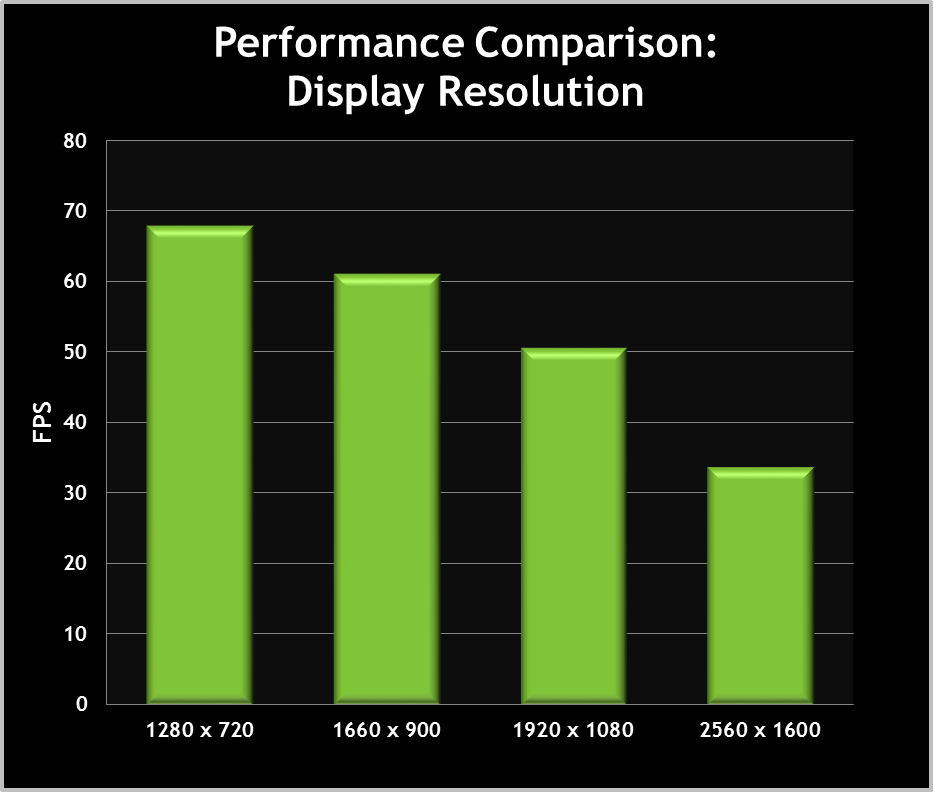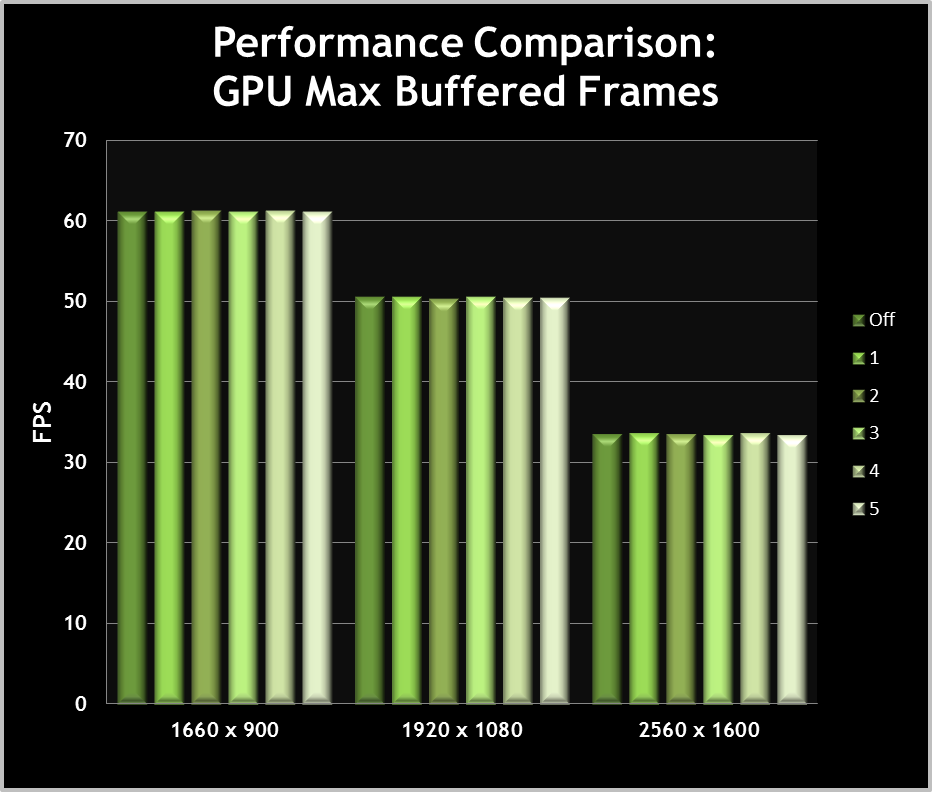Far Cry 3 Tweak Guide
[Page 4] Resolution, V-Sync & Max Buffer
This section begins our look at the graphics settings in Far Cry 3. These settings can be found under two sections of the Options menu: Video, and Video Quality. We start with the settings under the Video section.
Display Resolution: This determines the Resolution of the game image, measured by the number of pixels horizontally and vertically (e.g. 1920 pixels x 1080 pixels). The number of resolutions available here is limited by the capabilities of both your graphics card and monitor. The higher the resolution you choose, the more detailed the image will be. However, higher resolutions also generate an increased load on your system, particularly your graphics card, and hence reduce your overall performance. For the sharpest image on an LCD monitor, select the maximum available resolution here, which is also referred to as your Native Resolution. If choosing a resolution below your maximum, use the Windowed option under the Window Mode setting, to avoid loss of image quality or image distortion.
An indication of the performance impact of changing this setting is shown below:

The graph shows that performance declines noticeably as resolution is raised, especially at higher resolutions. If nothing else works in improving your performance, turn down your resolution.
Window Mode: By default the game runs in Fullscreen mode, which takes up the entire screen, and is generally recommended for optimal image quality and memory management. If you want to run the game in a window on your desktop instead, then you can select Windowed or Borderless here. If you select Windowed, the size of the game window that appears on your desktop will depend on your Display Resolution setting. If you select Borderless, a borderless window that takes up the entire screen will be used. Running in Windowed mode is recommended if you want to reduce the game's resolution to improve performance, but still maintain a crisp image with no black bars or image distortion. Note that you can switch between windowed and fullscreen modes at any time by pressing ALT+Enter.
V-Sync: This setting controls Vertical Synchronization, which determines whether your GPU will become synchronized to your monitor's Refresh Rate capabilities. When set to 1 Frame, this will result in your maximum framerate typically being capped at around 60 FPS (for a 60Hz refresh rate). When set to 2 Frames, your maximum framerate is effectively capped at half your monitor's refresh rate, which usually equates to 30 FPS. When set to Off, there is no FPS cap, however you may experience a phenomenon known as "tearing", whereby portions of the game image sometimes appear to be out of alignment ("torn") across the screen. This does no harm to your system, but it can be annoying.
You have several options when it comes to the Sync Every Frame setting:
- Set it to 1 Frame or 2 Frames to remove all tearing. However, aside from capping your FPS, this can also reduce your overall performance by up to 50% or more due to a GPU timing quirk, and can introduce noticeable mouse lag.
- Set it to 1 Frame or 2 Frames, but also enable Triple Buffering. This will remove tearing without any loss in overall performance. Mouse lag may still occur.
- Set it to Off, and enable Adaptive VSync instead, available by selecting the Adaptive option under the Vertical Sync setting in the NVIDIA Control Panel. This method automatically disables VSync whenever your framerate falls below your refresh rate, preventing any performance loss, while also smoothing out framerates and minimizing tearing. Mouse lag may still occur.
- Set it to Off. This is the simplest method for providing maximum performance, removing the FPS cap and removing any mouse lag. However, tearing will be visible at times, and you may get large FPS fluctuations, which can result in stuttering.
It is recommended that in the first instance you disable this setting and try Adaptive VSync instead. If you experience any problems, or have noticeable mouse lag, or if Adaptive VSync is not available to you, the next thing you can try is to enable V-Sync at the 1 Frame setting and combine it with Triple Buffering. This should reduce the incidence of tearing, as well as minimizing large FPS fluctuations, but note that it may still result in mouse lag. If you have disabled V-Sync, but want to cap your FPS to prevent large fluctuations, see the MaxFPS command in the Advanced Tweaking section.
GPU Max Buffered Frames: This option controls the maximum number of pre-rendered frames stored in advance (buffered) by your graphics card before being displayed. The available options range from Off, which disables buffering, to a selection of 1 to 5 buffered frames. Raising the number of buffered frames will provide smoother performance, reducing stuttering and jerkiness, but may also produce noticeable input lag. The default of 1 is fine for most systems, but you can try a value of 2 or 3 to see if it helps make the game smoother without a noticeable drop in responsiveness. Setting this value Off will provide maximum responsiveness, but it may result in periodic stuttering.

The graph shows that there is no real performance impact from changing this setting. The primary impact is in increased or reduced stuttering, which affects the smoothness of gameplay.
Widescreen Letterbox: If set to On, this setting places black bars above and below the image, to provide a look similar to a widescreen movie. It can also be used to correct aspect ratio distortion if you select a resolution other than your native one in Fullscreen mode.
|
|
This work is licensed under a Creative Commons Attribution 4.0 International License.


